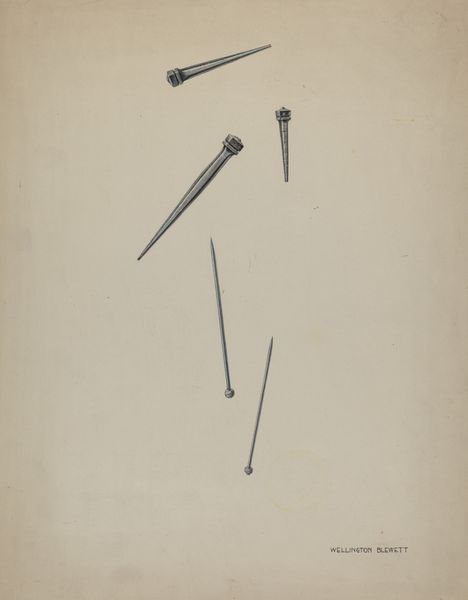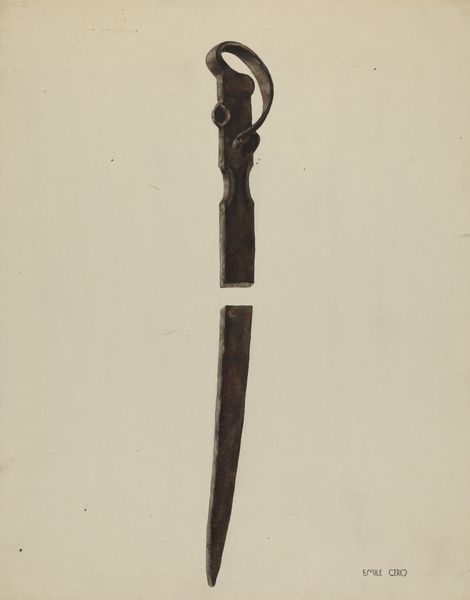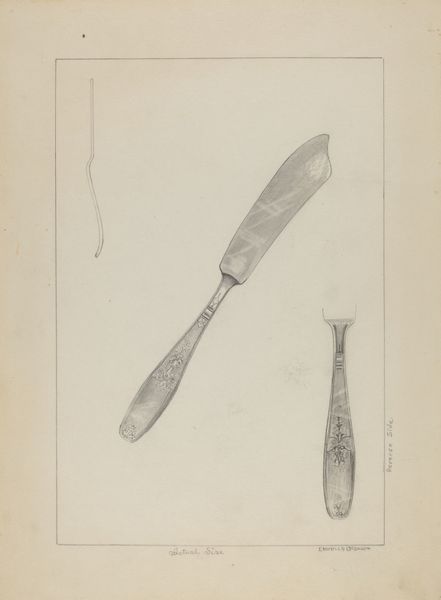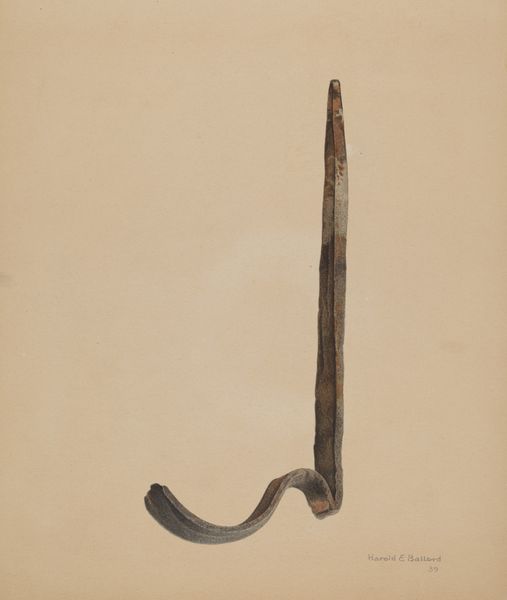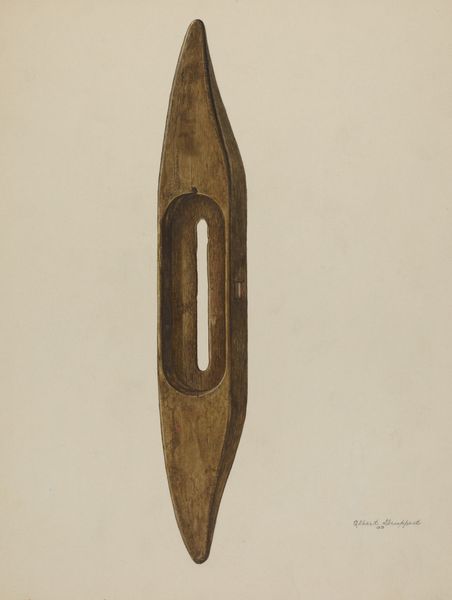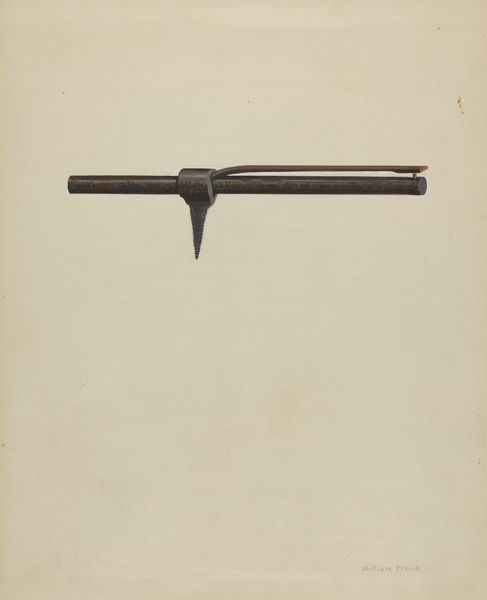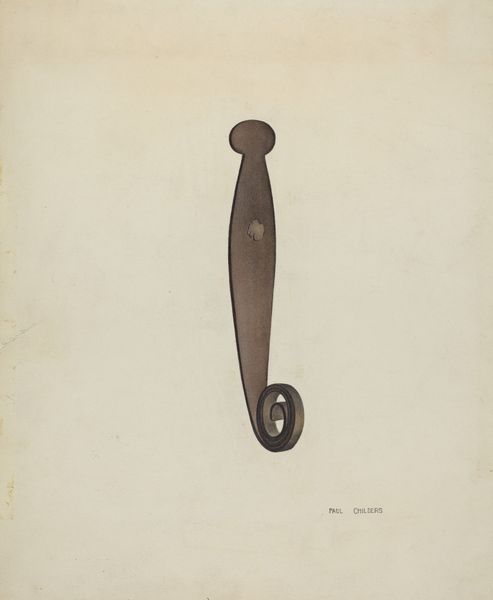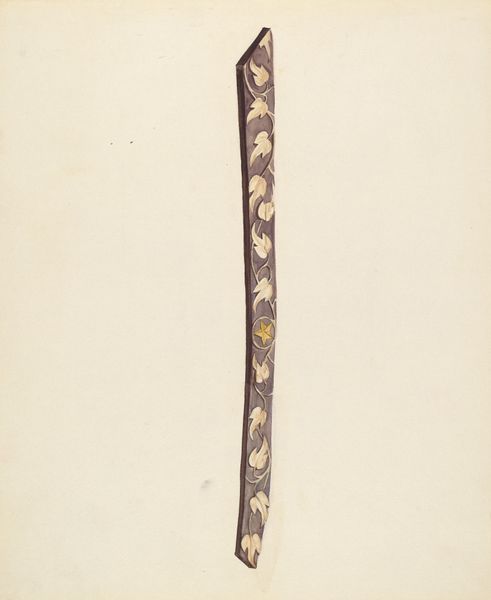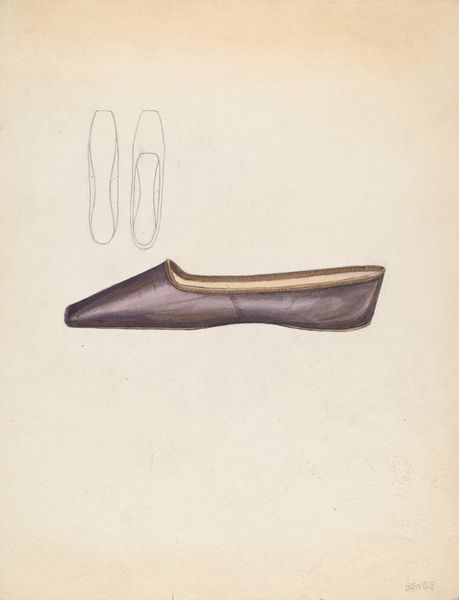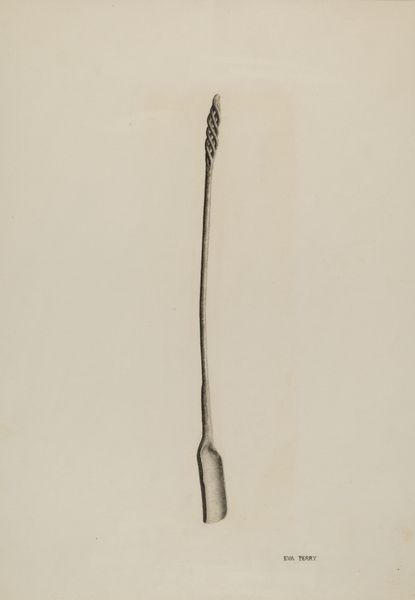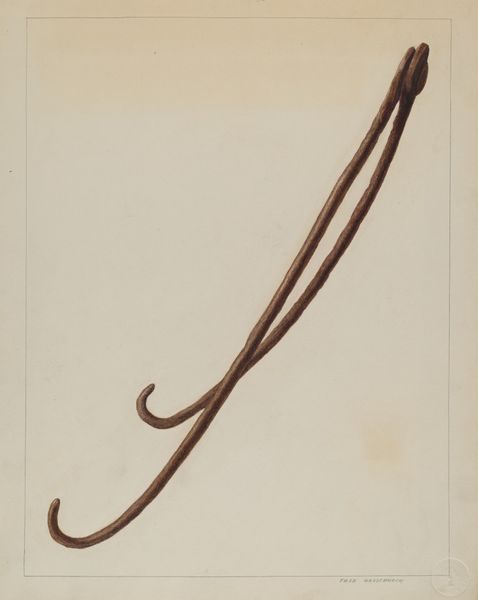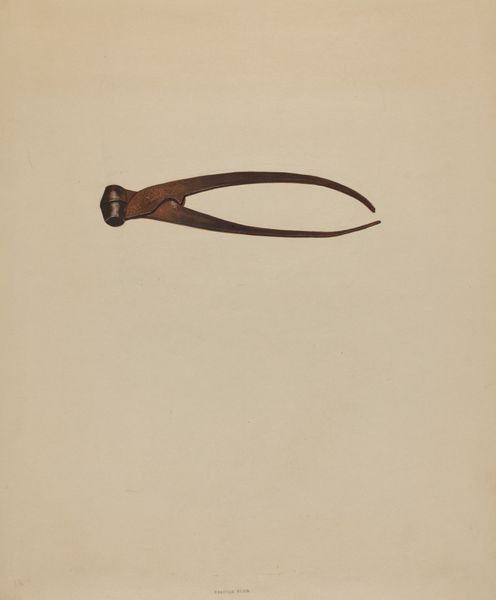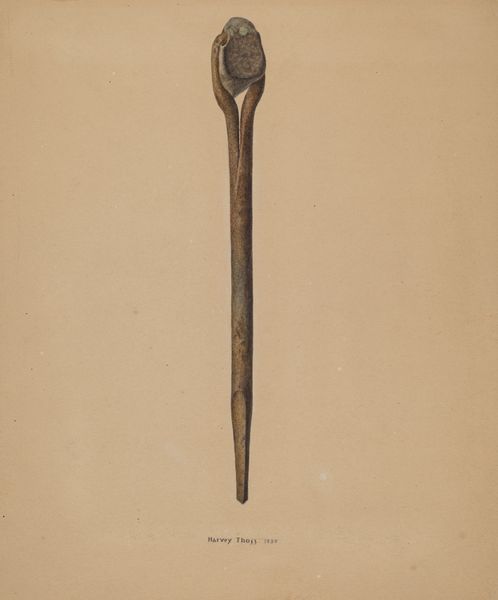
drawing, watercolor
#
drawing
#
watercolor
#
watercolour illustration
Dimensions: overall: 28 x 22.9 cm (11 x 9 in.) Original IAD Object: bit: 4 3/8" long; countersink: 5 11/16" long
Copyright: National Gallery of Art: CC0 1.0
Curator: Immediately striking! Stark, but somehow serene. Editor: And deceptively simple, too. What we're looking at is Fred Hassebrock's "Bit and Countersink," likely created around 1940. It's a watercolor and drawing on paper, showcasing two rather mundane tools. Curator: Mundane, perhaps, yet he elevates them, doesn't he? Isolating them against this vast off-white plane focuses all attention onto their forms and—most interestingly—the craftsmanship involved in their making. Editor: Precisely. Think about the context of 1940—mass production ramping up alongside a nostalgic view of pre-industrial craft. Representing simple hand tools this way implies something about the dignity of labor, maybe even a quiet resistance to factory standardization. Curator: Yes! I was going to suggest the hand versus the machine argument. I wonder about his choice of watercolor for this particular rendering? He could've chosen charcoal and made it more of a serious tonal study... but instead this adds to the handcrafted sense with it's humble accessibility and less intimidating demeanor. Editor: The muted tones lend an air of respect and almost…tenderness. He doesn't exploit them; he doesn't beautify them beyond their inherent function. They exist honestly, truthfully. It even hints at the societal pressures faced by the labor force, often unseen and under-appreciated. Their inherent functionality speaks to how crucial they are, even if they might often get overlooked. Curator: That honesty is evident even in the way he renders the metal--no polished gleam, but the impression of sturdy substance. These weren't pretty decorations or showy inventions; they are objects used by human beings. The fact that he included two specific, though common and modest, tool is intriguing because that shows attention and specificity. Editor: There's an invitation here, an opening to consider the relationship we each have with objects. In this modern and digital age, there is a whole generation of "making," in the maker movement of our era and digital fabrication and CNC machining and even hobbyists are exploring new material practices to push against mass manufacture. It opens up fascinating dialogues. Curator: This painting then serves as an enduring reflection on materiality. It quietly suggests a reconsideration of value. It asks the question that many are trying to answer today. What is "making"? Editor: Indeed. It gives these tools--these instruments that humanity utilizes, a presence that calls for introspection. I've come to a newfound perspective on these watercolor drawings.
Comments
No comments
Be the first to comment and join the conversation on the ultimate creative platform.
